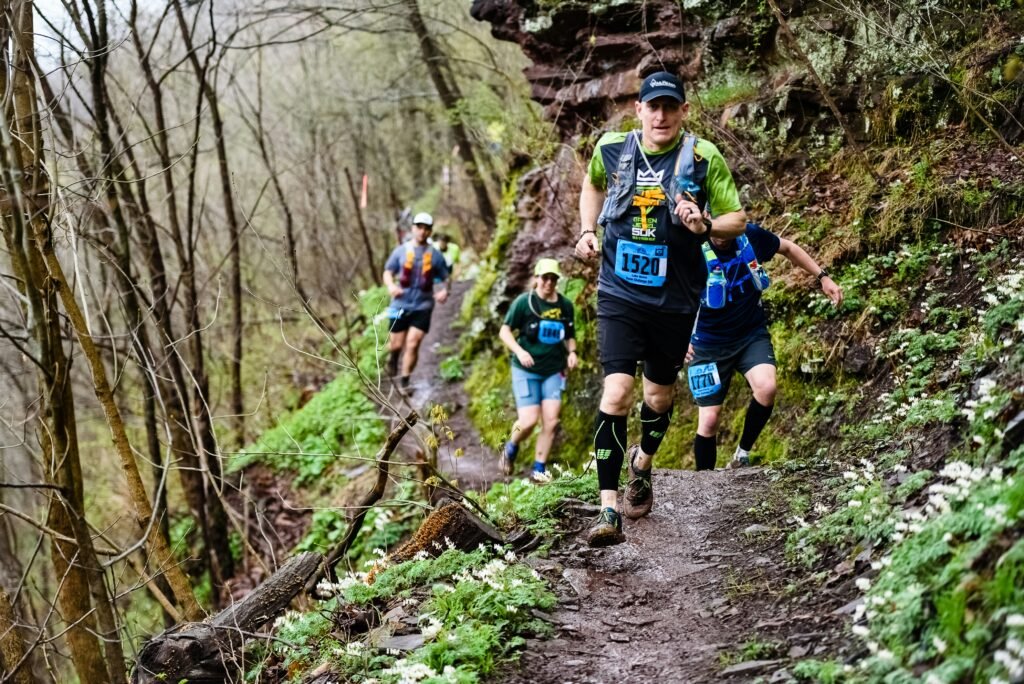Are you ready to break free from the monotony of city streets and embrace the thrill of off-road adventures? Trail running offers a unique and exhilarating experience that will challenge your body and mind in ways you never imagined. Whether you’re a seasoned runner looking for a new challenge or a beginner eager to explore the great outdoors, this guide will provide you with the essential knowledge and tips to embark on your trail running journey.
Trail running is more than just a sport; it’s a way to connect with nature, test your limits, and discover hidden gems right in your backyard. As you navigate winding paths, encounter diverse terrains, and overcome obstacles, you’ll find yourself immersed in a world of beauty and adventure that will leave you craving more.
Embarking on the Trail: A Beginner’s Guide
Selecting the Perfect Trail: Considerations and Tips
Choosing the right trail for your first trail running experience is crucial. Consider your fitness level, experience, and personal preferences. Start with easier trails that are well-maintained and have a gentle gradient. As you gain confidence and experience, you can gradually progress to more challenging trails.
Before hitting the trail, do your research and gather information about the trail conditions, distance, and elevation gain. Check online forums, trail running apps, or local running clubs for recommendations and updates on trail conditions.
When selecting a trail, keep these factors in mind:
- Terrain: Choose a trail with a surface that suits your comfort level. Paved trails are ideal for beginners, while dirt trails offer a more natural experience. Rocky or technical trails are best left for experienced runners.
- Distance: Start with shorter trails and gradually increase the distance as you build endurance and stamina.
- Elevation Gain: Consider the elevation gain of the trail. Steep trails can be challenging, especially for beginners.
- Trail Conditions: Check the trail conditions before you go. Wet or muddy trails can be slippery and hazardous.
- Facilities: Look for trails with facilities like restrooms, water fountains, and parking areas.
Time over Mileage: A Different Approach to Trail Running
Unlike road running, where distance and pace are often the primary focus, trail running emphasizes time spent on the trail rather than mileage covered. This shift in perspective allows you to enjoy the scenery, appreciate the natural surroundings, and focus on the experience rather than just the physical challenge.
When trail running, set a time goal instead of a distance goal. This will encourage you to slow down, take breaks when needed, and savor the journey. Remember, trail running is about the experience, not the speed.
Eyes on the Path: Navigating Trails Safely and Effectively
Trail running requires a different set of skills and techniques compared to road running. Here are some tips to help you navigate trails safely and effectively:
- Be Aware of Your Surroundings: Pay attention to the trail conditions, obstacles, and potential hazards. Look out for roots, rocks, loose gravel, and slippery surfaces.
- Use Proper Footwear: Wear trail running shoes with good traction and support. Trail running shoes are designed to provide stability and protection on uneven surfaces.
- Maintain Proper Form: Keep your body relaxed, your core engaged, and your feet close to the ground. Take shorter, quicker steps and avoid overstriding.
- Look Ahead: Keep your eyes focused a few steps ahead to anticipate obstacles and adjust your stride accordingly.
- Be Prepared for Changes: Trail conditions can change suddenly, so be prepared to adjust your pace and technique as needed.
Essential Preparations for Trail Running Success

Dressing for the Occasion: Attire and Footwear for Trail Running
When it comes to trail running, dressing appropriately is key to ensuring comfort and safety. Unlike road running, trail running often involves navigating uneven terrain, unpredictable weather conditions, and potential hazards like branches and rocks. Therefore, choosing the right attire and footwear is crucial.
Attire:
- Moisture-wicking fabrics: Opt for clothing made from materials that wick away sweat, keeping you dry and comfortable during your run.
- Layering: Dress in layers so you can adjust to changing temperatures. A base layer, a mid-layer for insulation, and a waterproof outer layer for protection against rain or wind are recommended.
- Bright colors: Wearing bright or reflective clothing can enhance your visibility, especially if you’re running in low-light conditions.
Footwear:
- Trail running shoes: Invest in a pair of trail running shoes specifically designed for off-road adventures. These shoes typically have aggressive tread patterns for better traction, reinforced toe caps for protection, and cushioning for comfort.
- Fit and support: Ensure that your trail running shoes fit snugly but not too tightly. Proper support is essential for preventing injuries and ensuring stability on uneven terrain.
- Break-in period: Before embarking on your trail running journey, wear your new shoes for shorter runs to break them in and avoid blisters or discomfort.
Know Your Route: Planning and Safety Measures for Trail Runners
Planning your trail running route is crucial for a safe and enjoyable experience. Here are some key considerations:
- Research and preparation: Gather information about the trail you intend to run, including its length, difficulty level, and potential hazards. Check trail conditions and closures before you go.
- Share your plans: Inform a friend or family member about your running route and expected return time. This way, someone knows where you are in case of an emergency.
- Carry essentials: Bring along essential items like a fully charged phone, a map or GPS device, a first aid kit, and sufficient water and snacks. Consider carrying a whistle or personal safety alarm for emergencies.
- Be aware of your surroundings: Pay attention to your surroundings and be mindful of potential hazards like slippery rocks, roots, or wildlife. Stay on designated trails to minimize your impact on the environment.
Terrain Awareness: Adapting to the Challenges of Trail Running
Trail running presents unique challenges compared to road running. Here’s how to adapt and overcome them:
- Uneven surfaces: Trail surfaces can be uneven, rocky, or muddy. Be prepared to adjust your stride and foot placement accordingly. Take shorter, quicker steps and use your arms for balance.
- Incline and decline: Trails often involve hills and slopes. Uphill sections require more effort, so pace yourself and use proper breathing techniques. Downhill sections can be challenging on the knees, so control your speed and maintain a stable posture.
- Obstacles: Trail running often involves obstacles like fallen trees, rocks, and roots. Be alert and anticipate potential hazards. Learn to navigate obstacles safely by stepping over or around them.
- Weather conditions: Trail running can expose you to unpredictable weather conditions. Be prepared for rain, wind, or even snow. Dress appropriately and adjust your pace and effort accordingly.
Sustaining Energy and Hydration on the Trail
Hydration and Nutrition: Fueling Your Trail Running Adventures
Trail running demands a unique approach to hydration and nutrition compared to road running. The unpredictable terrain, varying temperatures, and longer distances require careful planning to ensure you stay energized and hydrated throughout your adventure.
Hydration:
- Carry a Hydration Pack or Water Bottle: Bring a hydration pack or water bottle with you on your run to ensure you have access to water at all times. Aim to drink small amounts of water frequently, rather than large amounts infrequently.
- Monitor Your Hydration: Pay attention to your thirst and urine color. Clear or light yellow urine indicates adequate hydration, while dark yellow or amber urine suggests dehydration.
- Electrolyte Replenishment: Consider consuming electrolyte drinks or tablets, especially during longer runs or in hot weather, to replenish minerals lost through sweat.
Nutrition:
- Pre-Run Meal: Eat a balanced meal 2-3 hours before your run to provide sustained energy. Include carbohydrates, protein, and healthy fats.
- During-Run Snacks: Carry energy gels, bars, or other easily digestible snacks to consume during your run. Aim to consume 100-200 calories per hour of running.
- Post-Run Recovery: Refuel your body after your run with a meal or snack containing carbohydrates and protein to aid in muscle recovery.
Footwear Essentials: Investing in Quality Trail Running Shoes
Trail running shoes are specifically designed to provide traction, support, and protection on uneven surfaces. Investing in a good pair of trail running shoes is crucial for a safe and enjoyable experience.
- Traction: Look for shoes with aggressive tread patterns and lugs to provide grip on various terrains, including mud, rocks, and roots.
- Support: Trail running shoes should offer adequate support for your feet and ankles, especially if you’re running on technical trails.
- Protection: Trail running shoes often feature rock plates or toe guards to protect your feet from sharp objects and rocks.
- Fit: Make sure the shoes fit snugly but not too tightly. Try them on with the socks you plan to wear while running.
- Break-In Period: Allow some time for your new trail running shoes to break in before taking them on long runs.
Additional Insights for Trail Running Enthusiasts
Embracing the Uniqueness of Trail Running
a. No Two Trails Alike: The Beauty of Diverse Terrains
Trail running offers a diverse range of terrains, from lush forests to rugged mountains, each with its own unique challenges and rewards. This variety keeps the experience fresh and exciting, as runners encounter different obstacles and scenic vistas with every new trail they explore.
b. Embracing the Unpredictability of Trail Runs
Unlike road running, trail running often comes with unpredictable elements, such as uneven surfaces, obstacles like rocks and roots, and changing weather conditions. These challenges add an element of adventure and spontaneity to the run, requiring runners to adapt and overcome unexpected hurdles.
Trail Running Gear and Safety Precautions
a. Essential Gear for Trail Running Adventures
Proper gear is crucial for a successful and safe trail running experience. This includes trail running shoes with good traction, moisture-wicking clothing, a hydration pack or water bottle, and a small first aid kit. Additionally, consider carrying a map or GPS device, especially for unfamiliar trails.
b. Prioritizing Safety: Measures for a Secure Trail Experience
Trail running can be a solitary activity, so taking safety precautions is essential. Always inform someone about your planned route and expected return time. Carry a whistle or other signaling device in case of emergencies, and be aware of your surroundings, paying attention to wildlife and other potential hazards.
Pacing and Progression: A Gradual Approach to Trail Running
Beginners should start with shorter, easier trails and gradually increase the distance and difficulty as they gain experience and fitness. It’s important to listen to your body and take breaks when needed. Avoid pushing yourself too hard, especially in the beginning, to prevent injuries and burnout.
Exploring Challenges: Advancing Your Trail Running Skills
As you become more comfortable with trail running, you can start exploring more challenging trails with steeper inclines, technical terrain, and longer distances. These challenges will help you improve your strength, endurance, and agility, while also boosting your confidence and sense of accomplishment.
Trail Running Events: Joining the Community and Setting Goals
Participating in trail running events is a great way to connect with other enthusiasts, challenge yourself, and set goals. These events range from local races to multi-day ultramarathons, offering something for runners of all levels. Training for and participating in events can provide motivation and structure to your trail running journey.
Immersing in Nature’s Embrace: Trail Running as a Path to Connection
Trail running offers a unique opportunity to connect with nature and appreciate its beauty. The sights, sounds, and smells of the natural world can be incredibly rejuvenating and inspiring. Whether it’s the tranquility of a forest trail or the breathtaking views from a mountaintop, trail running allows you to escape the hustle and bustle of daily life and find solace in the wilderness.

